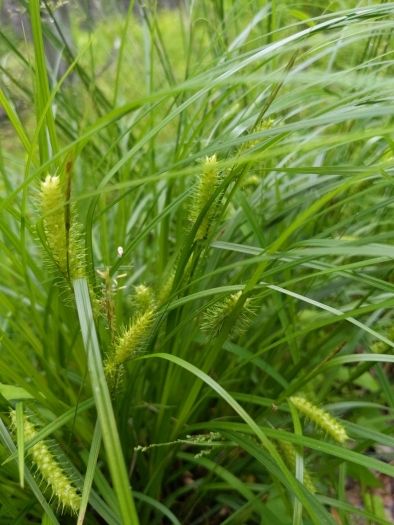Bailey’s Sedge
(Carex baileyi)
Bailey’s Sedge (Carex baileyi)
/
/

Alina Martin
CC BY 4.0
Image By:
Alina Martin
Recorded By:
Copyright:
CC BY 4.0
Copyright Notice:
Photo by: Alina Martin | License Type: CC BY 4.0 | License URL: http://creativecommons.org/licenses/by/4.0/ | Rights Holder: Alina Martin | Publisher: iNaturalist | Date Created: 2022-06-11T15:16:42-07:00 |

























Estimated Native Range
Summary
Carex baileyi, commonly known as Bailey’s sedge, is a perennial herb native to various wetland habitats in Eastern North America, particularly the Appalachian Mountains. It thrives in wet environments such as swamps, wet woods, sedge meadows, and along stream shores, where it plays a role in soil stabilization and provides habitat for wildlife. Bailey’s sedge typically forms dense clumps resembling bunch-grass, with stems that can reach up to 26 inches in height. The plant features reddish stem bases and produces an inflorescence consisting of 1-2 pistillate spikes and a single staminate spike. Its leaves and spikes are smaller and more delicate than those of its close relative, Carex lurida.
In cultivation, Bailey’s sedge is valued for its ability to thrive in wet conditions, making it suitable for rain gardens, water features, and naturalized wetland plantings. It is also used for erosion control along waterways. Gardeners should provide it with consistently moist to wet soil and partial to full shade to mimic its natural habitat. While it is not commonly found in the nursery trade, it can be a useful plant for ecological restorations and habitat creation. Due to its conservation status, it should be sourced responsibly.CC BY-SA 4.0
In cultivation, Bailey’s sedge is valued for its ability to thrive in wet conditions, making it suitable for rain gardens, water features, and naturalized wetland plantings. It is also used for erosion control along waterways. Gardeners should provide it with consistently moist to wet soil and partial to full shade to mimic its natural habitat. While it is not commonly found in the nursery trade, it can be a useful plant for ecological restorations and habitat creation. Due to its conservation status, it should be sourced responsibly.CC BY-SA 4.0
Plant Description
- Plant Type: Grass
- Height: 1-2 feet
- Width: 1-2 feet
- Growth Rate: Moderate
- Flower Color: N/A
- Flowering Season: Spring, Summer
- Leaf Retention: Evergreen
Growth Requirements
- Sun: Part Shade, Full Shade
- Water: High
- Drainage: Medium, Slow
Common Uses
Bird Garden, Deer Resistant, Erosion Control, Low Maintenance, Water Garden
Natural Habitat
Native to various wetland habitats in Eastern North America, particularly the Appalachian Mountains
Other Names
Common Names: Brown Sedge
Scientific Names: , Carex baileyi, Carex lurida var. gracilis, Carex lurida var. gracilis, Carex montamans, Carex tentaculata var. gracilis,
GBIF Accepted Name: